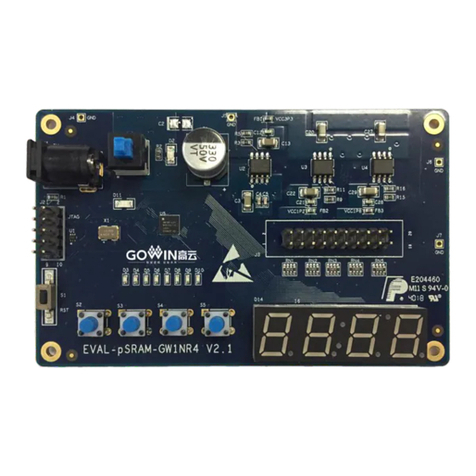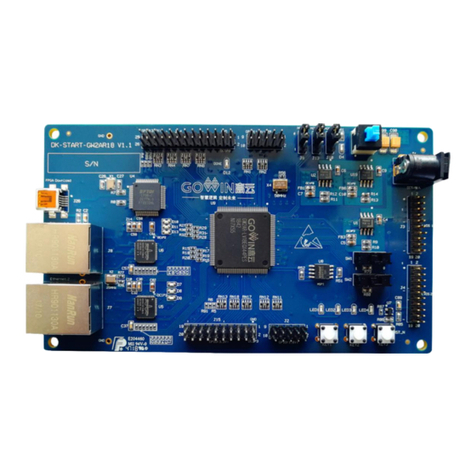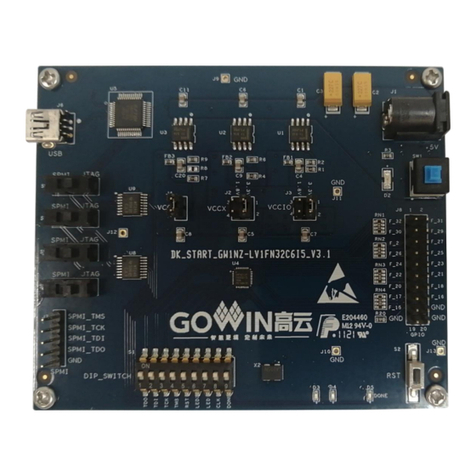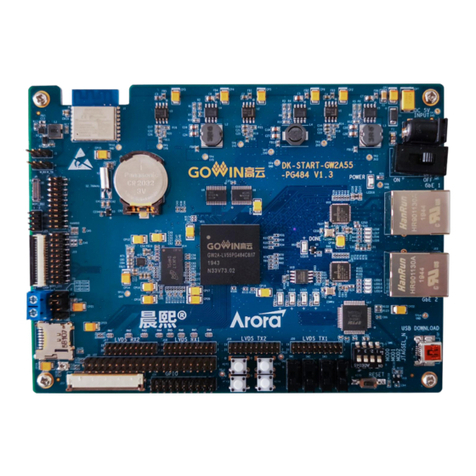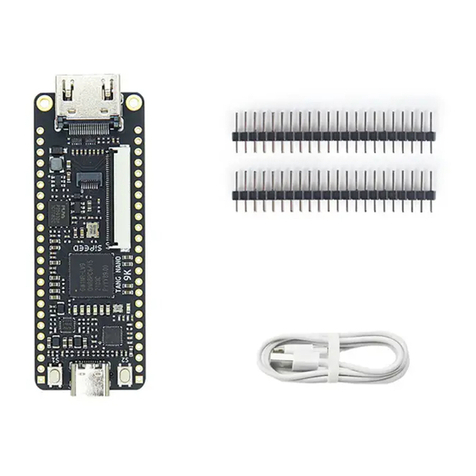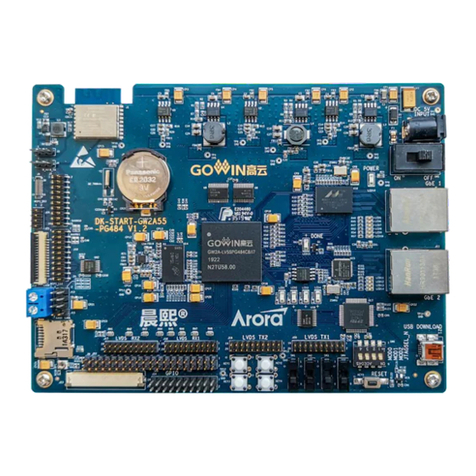
GW1NS & GW1NSR & GW1NSE & GW1NSER Series of FPGA
Products Schematic Manual
UG292-1.0E
There is no linear voltage regulator in devices of LX version, and VCCX
needs to be set to 1.8V. The I/O Bank voltage VCCO can be set to 1.2 V, 1.5
V, or 1.8 V as required.
There is linear voltage regulator in devices of UX, and VCCX can be set
to 2.5 V or 3.3V. The I/O Bank voltage VCCO can be set to 1.2 V, 1.5 V, 1.8 V,
2.5 V, or 3.3 V as required. It should be noted that VCCX needs to be greater
than or equal to VCCO.
There is no linear voltage regulator in devices of LV version, and VCCX
can be set to 1.8V, 2.5V or 3.3V. The I/O Bank voltage VCCO can be set to
1.2 V, 1.5 V, 1.8 V, 2.5 V, or 3.3 V as required.
Note!
LX and LX versions have the same functions, and the pins are compatible.
Vcc of these three versions is 1.2V. VCCX is the auxiliary power, which
is used to supply some circuits in the chip, supporting 1.8V, 2.5V and 3.3V.
After the chip powers on, VCCX can be turned off. VCCO Bank can be set to
1.2V, 1.5V, 1.8V, 2.5V, or 3.3V as required.
Power Index
The device can only operate when the power voltage is in the
recommended range. Table 1 lists the recommended range.
Table 1 Recommended Range
I/O Bank voltage for LX version
I/O Bank voltage for UX version
VCCX needs to be greater than or equal to VCCOx
for UX version.
I/O Bank voltage for LV version
Auxiliary voltage for LX version
Auxiliary voltage for UX version
VCCX needs to be greater than or equal to VCCOx
for UX version.
Auxiliary voltage for LV version
Power Consumption
For specific density, packages, and resource utilization, you can use
GPAtool to evaluate and analyze the power consumption.
Power Rising Slope
The reference for power-on time: 0.01mV/μs ~ 10mV/μs.
Power Filter
Each FPGA power input pin is connected to the ground with a 0.1uF
ceramic capacitor.
Noise processing should be noted at the input end of the VCC, and the


